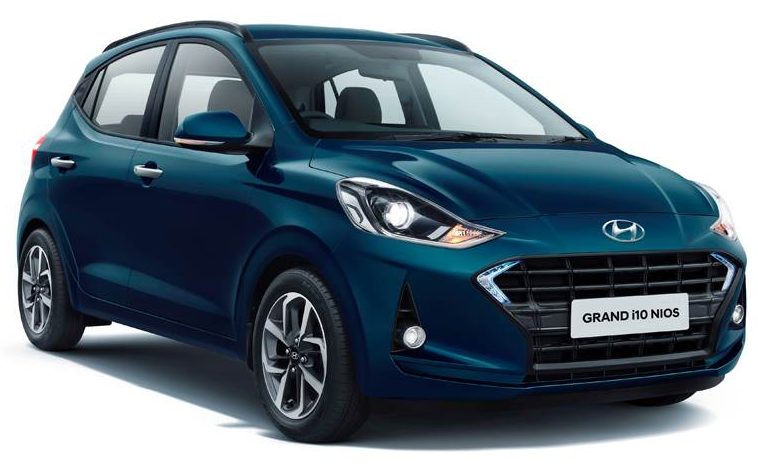Hyundai has finally released the first official pictures of the third generation of its very famous i10 hatchback. Christened as Grand i10 Nios, the hatchback will officially make a debut on August 20, 2019. According to the brand, the “Nios” suffix means “more”.
With the introduction of third-gen i10, the brand promises on offering more space, features and performance with the upcoming hatchback. The customers can book the all-new Hyundai Grand i10 Nios starting today at Hyundai dealerships as well as online with a token amount of INR 11,000.
The Grand i10 Nios will be lined up in the Hyundai’s portfolio in between the Grand i10 and i20 while co-existing with the Grand i10 at the same time. Based on Hyundai’s latest design language, the i10 Nios hatchback will be bigger in terms of dimensions when compared to the currently available Grand i10.

Coming to the exterior, the Grand i10 Nios gets a Santro Inspired design language with a cascading style grille flowing at the front fascia and being accompanied by the unique projector headlamps.
One of the things that set it apart from the previously running model is the addition of unique LED DRLs at the edges of the front grille. The higher dimension values of the hatchback will further lead to a more spacious interior. The Grand i10 Nios features dual-tone alloy wheels while the upward sweep to the rear adds to its aggressive profile.

In terms of interior, the brand has equipped the i10 Nios with ivory-grey upholstery and a redesigned dashboard setup. The dashboard further features an 8.0-inch touchscreen infotainment system with all the major car controls. The hatchback has also been equipped with a semi-digital instrument panel.
One can expect a roomy set up for the passengers in the back while the brand has equipped the hatchback with plenty of storage spaces and cup holders. The third generation i10 will get automatic climate control, power-adjustable ORVMs, and steering-mounted infotainment plus telephony controls.
Hyundai is likely to equip the i10 Nios with a 1.2-litre Kappa BS6- compliant petrol engine, that is capable of churning out a maximum power of 83 HP. The engine will be mated to a 5-speed manual gearbox. The brand might also introduce a BS6-compliant 1.2-litre diesel engine for the same at a later stage.


